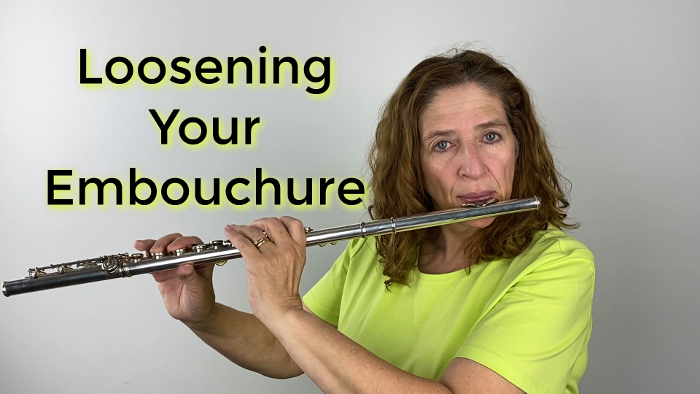Have you ever lost your low notes during a recital, or solo festival, or even in an ensemble? It is very common for flutists to be able to get a really rich low register in the practice room right before a performance only to lose those bottom notes on stage.
It is so frustrating to barely be able to get a good tone quality when you get to the low notes in your piece. If this has happened to you, you know exactly what I mean.
Tight Embouchure
When you identify the cause of the problem, you can start working on solutions. We often lose our low register because by the time we get to the low notes our embouchure is as tight as a drum! Throw in a little performance anxiety and our air is not aimed in the right direction. Then our rich low register loses its tone quality, or worse, becomes puffs of air.
The problem might be that you are keeping the embouchure you use for the high notes when you move to the low register. Pay attention to when you are playing a lot of high notes and then have to come down and play low. Is your embouchure stuck in that high position?
Stay Flexible
It takes time to train yourself to move your embouchure while you play. But your embouchure must always be in a state of flux. It has to be moving and adjusting. If we keep it in one spot, then not only we will lose our low notes, but we will not get the color we want or the sound we are looking for in the lowest octave. Plus, if your embouchure is just too tight, then you might do a lot of cracking on some of your notes as well.
Rests
But you know what? You can learn to loosen you that embouchure while you are playing! For example, in the Prokofiev Flute Sonata in the area between measures 3 and 4 you have a rest during which you can think about your jaw – open it, relax it. Identify spots like these in your music and write the word “loosen” right on the music. Or write some symbol that will remind you to loosen up your embouchure.
Now you do not have to wait for a rest because sometimes you do not have the right kind of rest that will allow you to really open up. So, you have to do it on the fly in the spur of the moment.
Breaths
Another opportunity for you to loosen up your embouchure is when you breath. Each and every time you take a breath remind yourself to loosen up.
All too often when we perform, we tighten up when we take a breath. Our throat gets a little tighter, then our fingers get tighter, and our embouchure gets tighter. That is a vicious circle that you can break by learning to take a quick quiet breath.
If every time you take a breath, you open your throat to take that yawning breath, this will help you practice keeping your embouchure loose. Then it will be ready for those low notes.
Marks
Again, you can mark the spots in your music where you have to take a fast breath. Then, take a fast yawning breath and loosen your embouchure. You can be loose and relaxed and still be speedy.
You can learn how to loosen up while you play. Train yourself to loosen and relax your embouchure at rests and breaths. Mark the spots in your music to remind yourself to loosen. Then you will learn how to play and keep your embouchure relaxed throughout the performance without losing the low notes.
Have fun!
DoctorFlute
Watch me demonstrate this idea:
Loosening Your Embouchure While You Are Playing – FluteTips 165

Tight Embouchure No Problem – FluteTips 182

How to Form a Great Flute Embouchure – FluteTips 132

Getting Spin on Your Third Octave Notes – FluteTips 171

Evening Out Your Registers – FluteTips 169

The Importance of Your Throat in Tone Production – FluteTips 157

